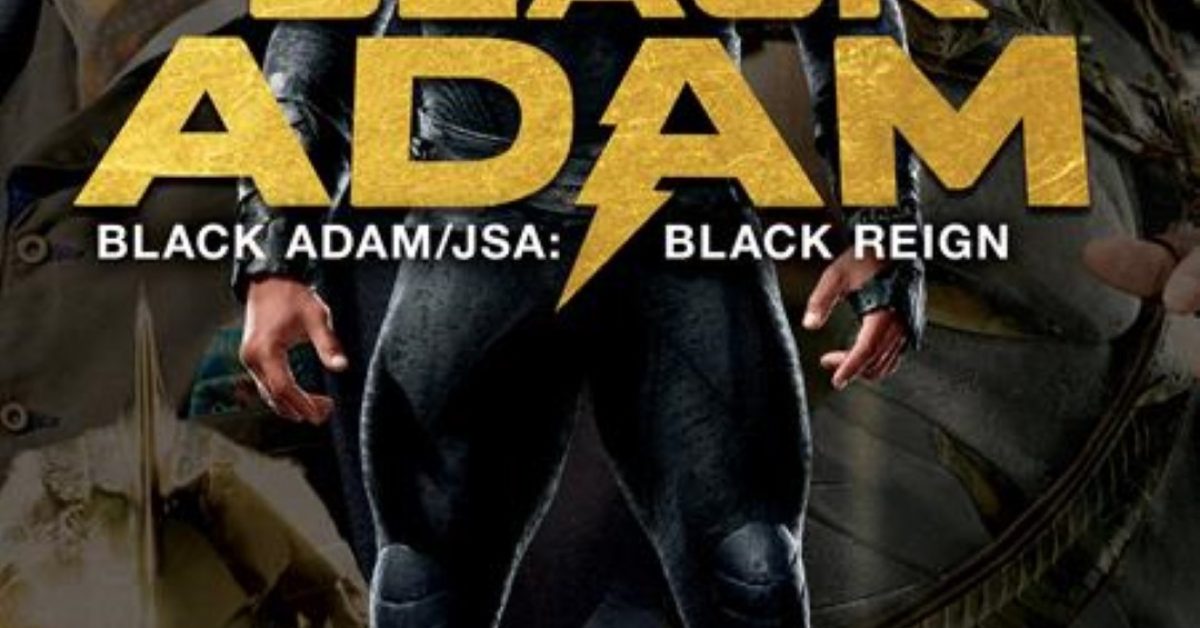|
Former Chairman/Publisher of DC Comics and currently a board member of Boom Studios, Paul Levitz get credit on black adam movie for his role, not so much in a creative capacity as the other “Special Thanks” names, but for his role in ensuring that DC Comics had a Black Adam movie they could make.
Shazam to the rescue?
Black Adam was an antagonist of Captain Marvel, published by Fawcett until a legal case brought by National Comics, the forerunner of DC Comics, sued them for similarity to Superman, a case that still baffles the mind, but it is the law for you. On his blog, Paul Levitz recounts how, in the 1970s, Superman comic book sales had been falling year after year, while Marvel sales were beginning to rise.
One of the publisher’s attempts to stem the tide Carmine Infantino, Paul Levitz explains, “was to license Captain Marvel, the only superhero that far surpassed Superman at times in the Golden Age. His publisher, Fawcett, had abandoned the comics business in mid-1950s when the whole field was shrinking, and had settled his long dispute with DC by agreeing to no longer publish the character. Fawcett had concentrated on his magazine business, and in the years that followed, he was sold to CBS, and had been renamed CBS Magazine Group Red Cheese could not be published without DC’s consent (and it’s not clear that there would have been any other bidders, as the super -heroes dwindled after the Batman craze died down), it wasn’t hard to negotiate. Bernie Kashdan licensed out the release terms largely on their traditional basis, and off we went. uniquely, DC would also control all licenses e t media rights, sharing profits with CBS.
Black Adam and Co Resurrected
DC Comics has therefore licensed the publishing rights to the Captain Marvel comics. Even though they couldn’t call them Captain Marvel comics because of…Marvel Comics. But that wasn’t the only problem. Paul Levitz explains “With hindsight from 20-20 and unprovable insight, I would say that Captain Marvel’s return suffered from three challenges: first, the hero’s name itself was not available because the mark had expired and Marvel had wisely jumped in with their own Captain Marvel; second, editor Julie Schwartz arranged a very bad marriage for the creative team, putting Denny O’Neil (who favored serious melodrama) with CC Beck, the original artist of the hero (and a determined proponent of the tongue-in-cheek humor that was the show’s hallmark); and more seriously, in misjudging that the audience had simply gone from innocence enjoying the charm of the ‘original, with its talking tiger and menacing worm. Fan speculation fueled sales of the first issue (I remember buying a pile at the newsstand to ship to Nick Landau, the fan entrepreneur british cofon dera Forbidden Planet and Titan Distributors), but it wasn’t enough to sustain the series. Beck grew increasingly frustrated, and a succession of talented creatives never found a good balance or tone. Despite this, it would prove to be an excellent arrangement for DC, with the launch of two television series and associated merchandising.”
A success therefore for multimedia and merch, less for the comic strip itself. And there were other issues regarding how DC could use the character while paying Fawcett money. “One of the obstacles to successfully establishing it in comics seemed to be that quirky license. His provisions hadn’t really envisioned embedding it deeply into the DC character universe: he anticipated the royalty rate would be pro-rated for a team like a BRAVE & BOLD appearance or the eventual tabloid SUPERMAN VS SHAZAM, but had a “floor” on the royalty rate that made it impossible to have him as a member of a group like the Justice League, or appear in a massive mash-up…”
The Marvel Family Takeover
And it was Paul Levitz who found the solution that led to the current situation. “At that time, I was managing the business side of DC, so after discussions with Jenette Kahn and Dick Giordano, I went to solve this problem. The most practical solution was to simply buy out CBS’ stake in the property: they were never going to go back into the comics business (in fact, they would sell their magazine division soon after), and while it was nice to get a modest royalty check each year, it seemed like a doable deal. I negotiated with a slightly older accountant for their magazine division, David Pecker. David would go on to an illustrious career in magazine publishing, eventually heading American Media, publishers of NATIONAL ENQUIRER, where his exploits would come to a controversial end.”
That’s saying it politely. David Pecker, who previously published Trump Style distributed to guests of Donald Trump’s properties, is alleged that the publisher of The National Enquirer agreed with Trump that he would use the magazine to catch and kill any sex allegations against him. He was investigated for such dealings, including allegations of Karen McDougal bought for $150,000 in 2016, and $30,000 for Dino Sajun.”
Paul Levitz and risk versus reward
Paul Levitz concluded, “We’ve worked out a buyout, and not just of Captain Marvel, but of all of Fawcett’s remaining comic book assets, including stacks of comics that would end up in DC’s library.” And although success over the years has been relatively limited, the Shazam and black adam future films and sequels will have more than paid for any risk Levitz might have taken. And perhaps one of the smartest decisions he made at the publisher that earned Warner Bros. very many millions. You can read more on Paul Levitz’s blog, here.

